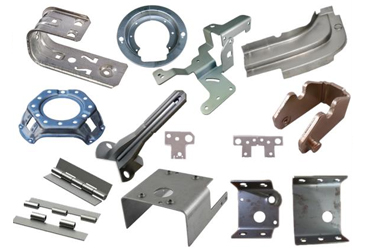Views: 8 Author: Site Editor Publish Time: 2022-06-27 Origin: Site
Regarding custom sheet metal parts and enclosures, welding can solve a host of design challenges. There are many types of welding, such as spot welding, seam welding, fillet welding, plug welding, and position welding, to name a few. The process of welding lightweight sheet metal can be problematic if the proper welding methods are not used. With this article, Goldconn, a professional custom sheet metal fabricator, will explain why cold metal transfer (CMT) welding is better than traditional MIG welding (metal inert gas) or TIG welding (tungsten embedded gas) when customizing sheet metal parts.

Problems with other welding methods
During the welding process, the heat generated by the torch heats the workpiece and the wire feeder in the torch, melting and fusing them. When the heat is too high, the filler can melt and cause the metal to drip onto the part before reaching the workpiece. Other times, the weld can heat the workpiece quickly and cause distortion, or in the worst-case scenario, the hole may burn into your part.
The most common types of welds are MIG and TIG welds. They both have a higher heat output than cold metal transfer (CMT) welding.
In our experience, TIG and MIG welding are unsuitable for joining light gauge sheet metal. Due to excessive heat, warpage and back fusion can occur, especially on stainless steel and aluminum. Before the introduction of CMT welding, welding light gauge sheet metal was often more of an art form than an engineering production process.
How does CMT work?
CMT welding has an exceptionally stable arc. The pulsed arc consists of a low power base current phase and a high power pulse current phase with no short circuit. This results in virtually no spatter. (Spatter is a droplet of molten material generated at or near the welding arc.) .
During the pulsed current phase, the weld droplets are separated in a targeted manner by precisely measured current pulses. Due to this process, the arc introduces heat for only a short period during the arc burning phase.
The arc length is detected and adjusted mechanically. The arc remains stable regardless of the surface of the workpiece or how fast the user is welding. This means that CMT can be used anywhere and in any position.
The CMT process is physically similar to MIG welding. The most significant difference, however, is the wire feed. Unlike CMT, the wire does not continue forward into the molten pool but retracts as the current flows momentarily. The wire and shielding gas pass through the welding torch and the arc between the wire and the weld surface - causes the tip of the wire to liquefy and apply to the weld surface. CMT uses automatic activation and deactivation of the heated arc to heat and cool the wire while bringing the wire into and out of contact with the molten pool multiple times per second. Because it uses a pulsed action rather than a continuous power flow, this heat reduction is the most significant advantage of CMT, which is why it is called "cold" metal transfer.
Goldconn is a professional precision sheet metal fabricator. If you have a need for custom sheet metal parts, welcome to contact us, you can also learn more about our custom sheet metal services through our “sheet metal services”page.
Dear friends, We are pleased to invite you to attend PCIM EUROPE 2025 EXHIBITION. Goldconn will be showcasing our latest innovations and technologies at Hall 6, Booth 300, which will be held at the Nuremburg, Germany, from 6th to 8th May 2025.
The Qingming Festival is an important traditional festival in our country.
https://goldconnhk.com
In order to ensure the safety of employees in the operation of equipment, our company will often hold safety production training to enhance employees' safety awareness and operation norms
Many machine parts that are important for repair and replacement are the product of metal fabrication. The importance of metal fabrication in manufacturing and industry cannot be overstated. This process plays an essential role in manufacturing and is often the foundation and support for sheet metal
USB connectors were introduced in the mid-1990s and have since evolved in size, shape, and data and power transfer capabilities. Today, the latest physical standard is Type C. In addition to greater bandwidth and bi-directionality, and reversibility, this latest iteration is capable of significantly
Many people refer to welding and metal fabrication as if they were two different words for the same process. While both processes require the use of metal, the terms are not interchangeable. Metal fabrication can be described as the process of making a product from metal. Welding is usually a part o